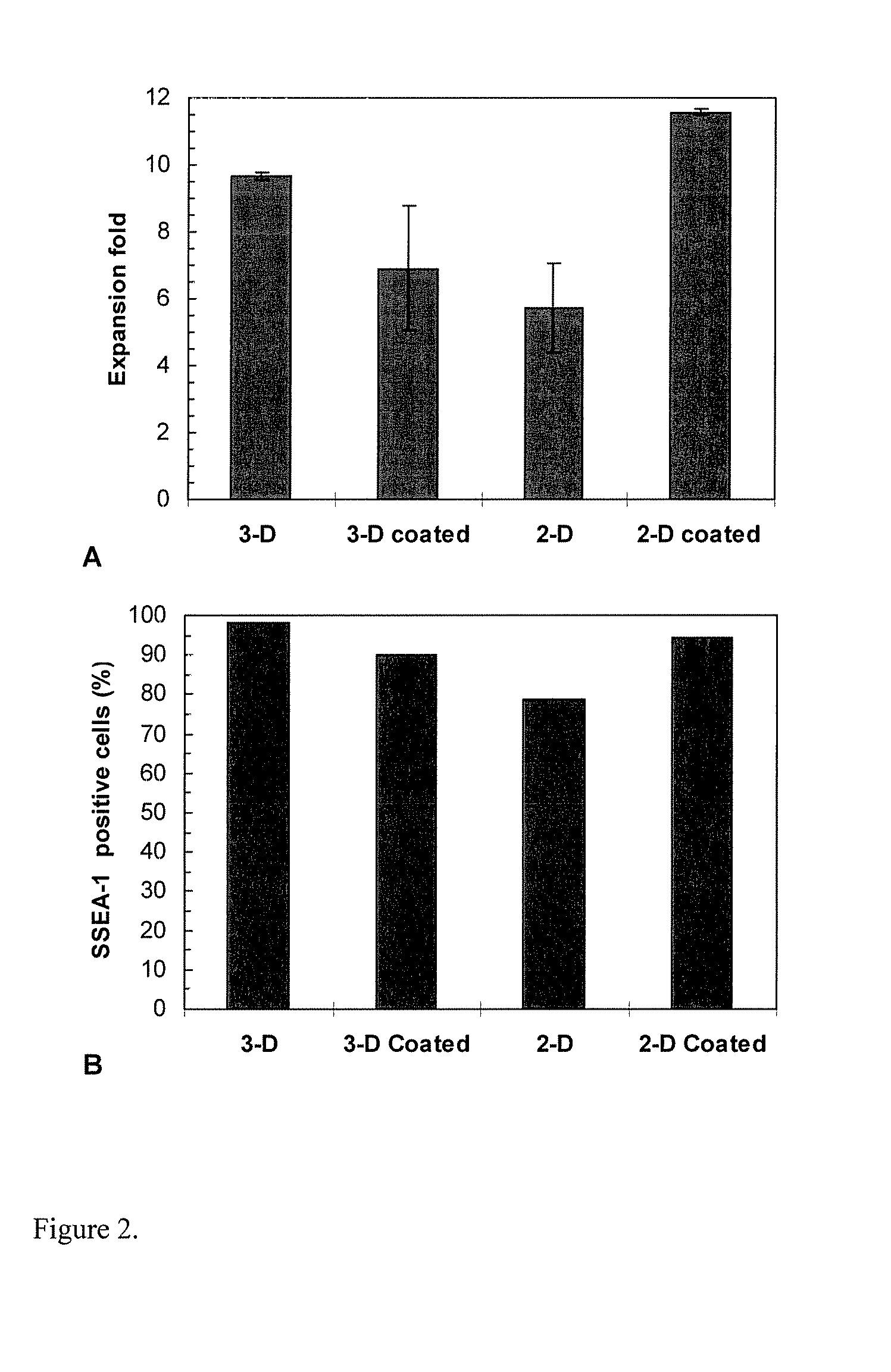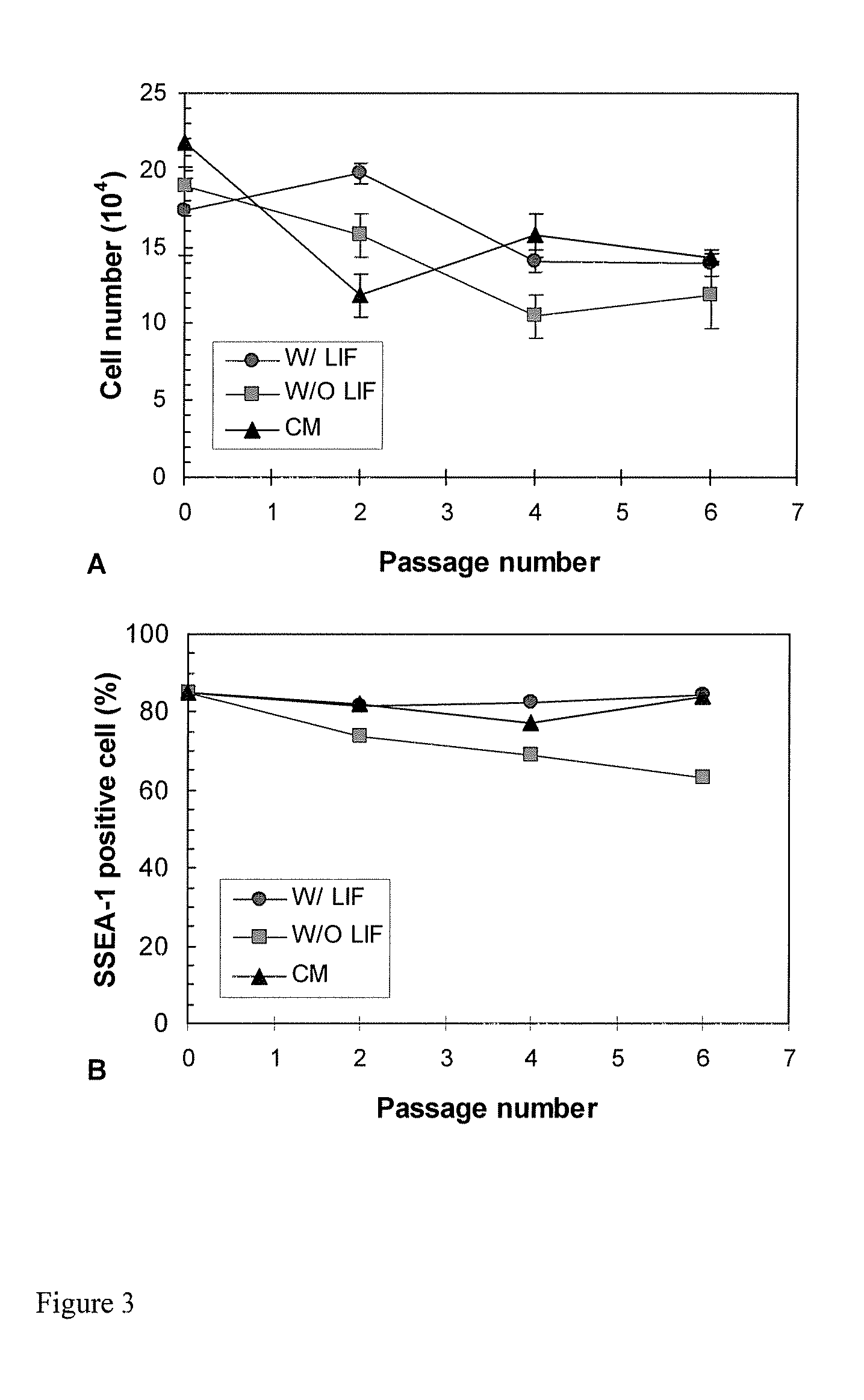Methods and apparatuses for growing cells
a cell culture and cell technology, applied in the field of cell culture, can solve the problems of limited surface area, difficult scaling up, and inability to develop an economical method for mass production of es and eg cells, and achieve the effect of increasing the perfusion flow rate over the stem cells
- Summary
- Abstract
- Description
- Claims
- Application Information
AI Technical Summary
Benefits of technology
Problems solved by technology
Method used
Image
Examples
example 1
Two-Stage 3-D Bioreactor for Stem Cell Expansion
[0049] Materials and Methods
[0050] Cultures and Media
[0051] Murine ES D3 (mES) cells (CRL-1934, ATCC) were maintained on gelatin pre-coated T-flasks containing the ES growth medium, which consisted of the knock-out Dulbecco's Modified Eagle's Medium (DMEM) with 10% fetal bovine serum (FBS), 50 U / ml penicillin, 50 μg / ml streptomycin, 0.1 mM non-essential amino acids, 2 mM L-glutamine, 100 μM β-mercaptoethanol (Sigma, St. Louis, Mich.) and 100 μM leukemia inhibitory factor (LIF) (Chemicon, Temecula, Calif.). Both STO (CRL-1503, ATCC) and mouse embryonic fibroblast (MEF) (SCRC-1045, ATCC) cells were cultured in DMEM with 10% FBS, and they were used to prepare the conditioned media described later. Human ES (hES) cells (SCRC-2002, ATCC) were maintained on Matrigel (BD, San Jose, Calif.) coated T-flasks and cultured in the MEF conditioned medium described below supplemented with 4 ng / ml bFGF. Unless otherwise noted, these T-flask culture...
example 2
Neural Differentiation from Embryonic Stem Cells in Different Culture Systems
[0132] Materials and Methods
[0133] Cultures and Media
[0134] ES D3 cells (CRL-1934) obtained from ATCC were maintained on gelatin pre-coated T-flasks consisting knock-out Dulbecco's Modified Eagle's Medium (DMEM) supplemented with 10% fetal bovine serum (FBS), 50 U / mL penicillin, 50 μg / mL streptomycin, 0.1 mM non-essential amino acids, 2 mM L-glutamine, 100 μM β-mercaptoethanol (Sigma) and 100 μM leukemia inhibitory factor (LIF) (Chemicon). For neural differentiation, LIF was excluded in the above ES medium and either retinoic acid (10−7 M) or an astrocyte-conditioned medium (30% v / v) was added to induce neural differentiation.
[0135] Astrocytes (CRL-2253) from ATCC were cultured in DMEM with 10% FBS. Approximately three to five million astrocyte cells were inoculated to a PET matrix submerged in 110 mL of DMEM with 10% FBS in a 250-mL spinner flask. The medium was refreshed at day six and cells were cult...
PUM
 Login to View More
Login to View More Abstract
Description
Claims
Application Information
 Login to View More
Login to View More - R&D
- Intellectual Property
- Life Sciences
- Materials
- Tech Scout
- Unparalleled Data Quality
- Higher Quality Content
- 60% Fewer Hallucinations
Browse by: Latest US Patents, China's latest patents, Technical Efficacy Thesaurus, Application Domain, Technology Topic, Popular Technical Reports.
© 2025 PatSnap. All rights reserved.Legal|Privacy policy|Modern Slavery Act Transparency Statement|Sitemap|About US| Contact US: help@patsnap.com



